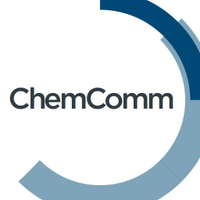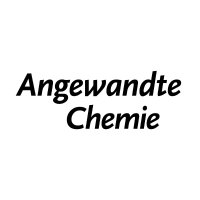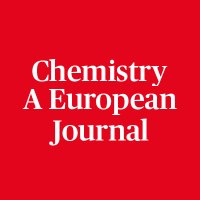
Canac Yves
@canacyves
CNRS Research Director:
Main-group Chemistry, Synthetic chemistry, Organometallic chemistry, Coordination chemistry, Homogeneous catalysis.
ID: 1175006161013227521
https://www.lcc-toulouse.fr 20-09-2019 11:18:08
920 Tweet
412 Followers
279 Following



Recent Development of DNA‐based Biohybrid Systems Driven by Light 👉…mistry-europe.onlinelibrary.wiley.com/doi/10.1002/ej… Olivier Baslé Canac Yves Zachary Pastorel ChemBioNAC Université de Montpellier IBMM - Institut des Biomolécules Max Mousseron


Learn about 'Pushing the limits of electron donation for cis-chelating ligands via an alliance of phosphonium ylide and anionic abnormal NHC' by Mohammed Lahcini, Dmitry A. Valyaev Canac Yves, Oleg A. Filippov #openaccess buff.ly/40QBsiC

Harnessing Organopotassium Reagents for Cross-Coupling with YPhos-Pd Catalysts: Opportunities, Applications, and Challenges | Journal of the American Chemical Society Prof Hevia 🇺🇦 @DCBPUnibern Total Synthesis and Methodology Highlights Viktoria Gessner (The Gessner Group) Ruhr-Universität Bochum pubs.acs.org/doi/10.1021/ja…

Ph3PC – A Monosubstituted C(0) Atom in Its Triplet State (Max M. Hansmann and co-workers) Hansmann Lab #openaccess 🔓 onlinelibrary.wiley.com/doi/10.1002/an…

Cyclic (Alkenyl)(Amino)Carbene (SMeCAenAC): Introducing a Member to the Cyclic (Alkyl)(Amino)Carbenes Family Featuring a Narrow Energy Gap | Journal of the American Chemical Society IIIT Delhi pubs.acs.org/doi/10.1021/ja…

We finish X with a scientific firework! Very proud of a brilliant team to finally publish our work on C(sp3)-atom transfer Science Magazine ! Thanks to European Research Council (ERC) science.org/doi/10.1126/sc…

A simple guide to the design of metal complexes in luminescence and photoredox catalysis. With Giacomo Morselli and Christian Reber in J. Am. Chem. Soc.: pubs.acs.org/doi/10.1021/ja…


Can we stereoselectively activate E–H bonds at a single carbon center? Chiral CAACs to the rescue! Congratulations for this beautiful work by Rodolphe Jazzar @Jachu25 🎉 pubs.acs.org/doi/10.1021/ja…




Further exploration of the beautiful bis(borane) made in the Warren Piers lab for small molecule activation. Laboratoire de chimie de coordination


The result of a fantastic collaboration, which started a few years back with Olivier (Olivier Baslé), Michael (Michael Smietana), Laurent (Laurent Evanno), Yves Canac, Erwan (Erwan Poupon), and Steve (stephen hilton) under the auspices of the ANR (ANR - Agence nationale de la recherche). 2/3

Carbanionic reagents are not just strong bases and versatile alkylation agents—they offer much more! 🚀 Curious about the many facets of carbanion chemistry? Check out our latest review article in Nature Reviews Chemistry for a deep dive into their reactivity and applications👇 European Research Council (ERC)

Very pleased to share our latest publication on the Synthesis and Base-Pairing Properties of Oligonucleotides Containing 5′-(R)- and 5′-(S)-C-Aryl-thymidine now in JOC pubs.acs.org/doi/10.1021/ac… Debart Françoise Vasseur Jean-Jacques Marcel Hausdorff CNRS Chimie Université de Montpellier ChemBioNAC




![Michael Smietana (@smietana_m) on Twitter photo Our work on Enantioselective Artificial PhotoDNAzyme now live on ChemRxiv
tinyurl.com/mwtpd96u
Our work merges synthetic transition-metal photocatalysis with the chiral environment of DNA to achieve visible-light-driven, enantioselective [2+2] cycloadditions. Our work on Enantioselective Artificial PhotoDNAzyme now live on ChemRxiv
tinyurl.com/mwtpd96u
Our work merges synthetic transition-metal photocatalysis with the chiral environment of DNA to achieve visible-light-driven, enantioselective [2+2] cycloadditions.](https://pbs.twimg.com/media/GsvmjLcXIAAXcsZ.png)